
2-26 #YellowToGreen : Qualcomm allegedly to have TSMC make all of its next-gen 3nm processors; Visionox has announced China’s first 1Hz low-power AMOLED display; LG Electronics is exiting the global solar panel business; etc.

TSMC is allegedly ready to take all of Apple’s 5G modem orders for its upcoming iPhone 14 series. The related chips will be produced using TSMC’s 6nm process, and the annual demand is expected to exceed 150,000. It will be a trend to upgrade RF-related chips to 6nm process casting. Due to the largest production capacity of TSMC’s advanced process and stable production quality and yield, Apple is still the largest buyer of TSMC’s advanced process. (UDN, GSM Arena)
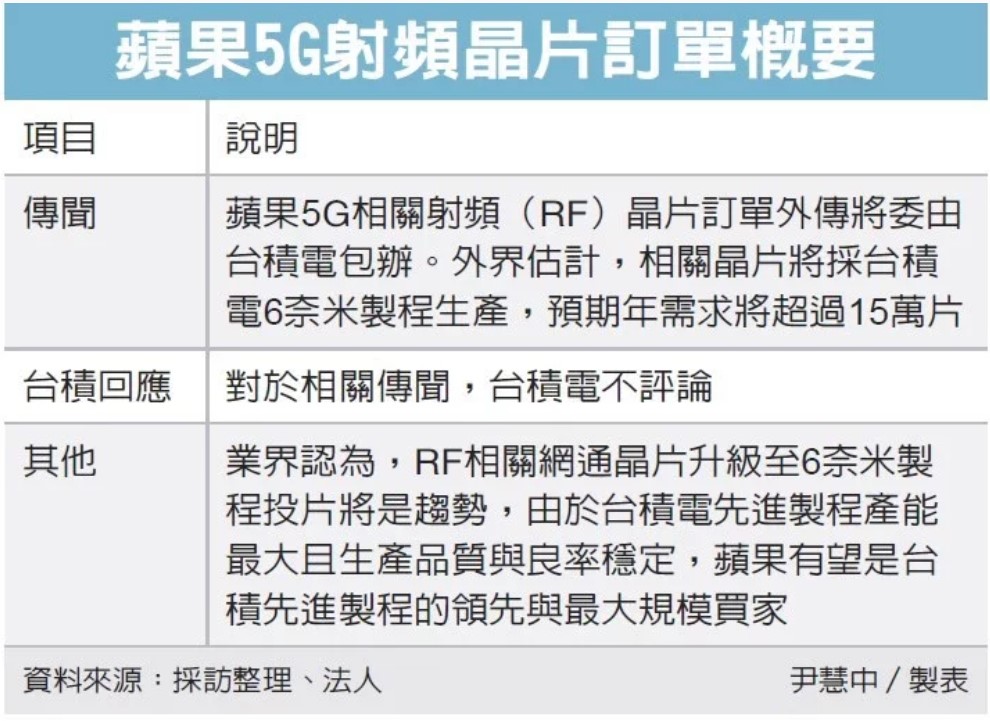
Qualcomm has allegedly decided to have TSMC manufacture all of its next-gen 3nm processors instead of Samsung. This is said to be due to Samsung’s yield issues. Qualcomm has even contracted TSMC to manufacture a certain percentage of its 4nm chipset, the Snapdragon 8 Gen 1 found in the Galaxy S22 series, even though Samsung Foundry was previously selected as the only manufacturer of this chip. Samsung’s issues with yield are concerning. It is said that the yield of the Qualcomm Snapdragon 8 Gen 1 manufactured by Samsung Foundry is 35%. Qualcomm reportedly informed Samsung of its decision to cut orders for 4nm chips and not provide any orders for 3nm chips when TM Roh, Samsung’s MX division boss, visited the company’s US headquarters in 2021. (Gizmo China, The Elec, Android Headlines, SamMobile, CN Beta)
Qualcomm is allegedly developing 2 new 4nm chipsets for wearables. Qualcomm Snapdragon Wear 5100+ will reportedly contain a Molded Embedded Package (MEP) wherein all the components are bound together. By slight contrast, the standard Snapdragon Wear 5100 will come in the form of a Molded Laser Package (MLP) where the SoC and the PMIC (power management integrated circuits) are separate. Snapdragon Wear 5100+ will also offer an “ultra low power deep sleep mode”, capable of running Wi-Fi or Bluetooth thanks to the QCC5100 co-processor. Among other features of this co-processor include the ARM Ethos Machine Learning Core, which can accurately detect falls and heart rate variance. The 5100+ chipset should also feature enhanced LRA haptics. (Android Headlines, Gizmo China, Winfuture.de, Android Authority)
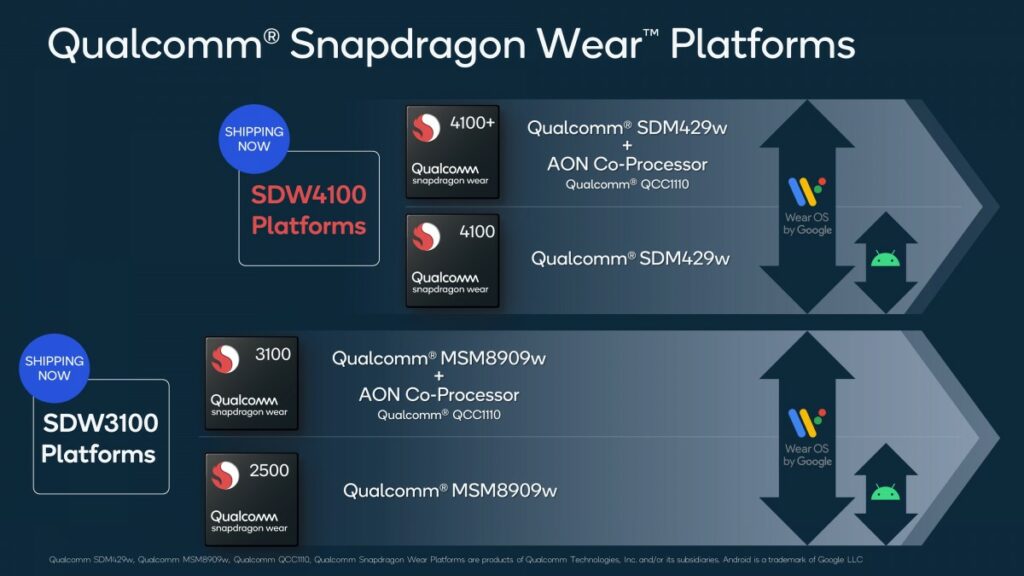
imec, a world-leading research and innovation hub in nanoelectronics and digital technologies, KU Leuven, and PragmatIC Semiconductor, a world leader in flexible electronics, present the fastest 8-bit microprocessor in 0.8µm metal-oxide flexible technology capable of running real-time complex assembly code. The microprocessor was implemented with a unique digital design flow that allowed the creation of a new standard cell library for metal-oxide thin-film technologies – relevant for designing a broad range of loT applications. The robust thin-film technology offered by imec’s foundry partner PragmatIC Semiconductor was key to integrate the approximately ~16,000 metal-oxide thin-film transistors on a 24.9mm2 flexible chip. (My Drivers, imec, Design Reuse, EE News Europe)
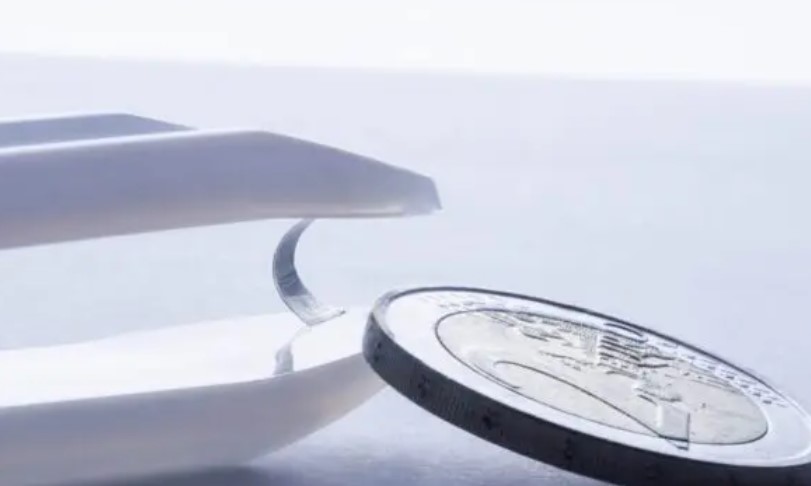
The global smartphone AP (Application Processor)/SoC (System on Chip) chipset shipments grew 5% YoY in 4Q21, according to Counterpoint Research. Qualcomm recorded a very strong quarter, growing 18% QoQ and 33% YoY despite component shortages and foundry capacity not being able to keep up with demand. MediaTek led the smartphone SoC market in 4Q21 with a 33% share. Shipments declined due to inventory correction as many customers had built inventories due to supply chain constraints. (GSM Arena, Counterpoint Research, Gizmo China)
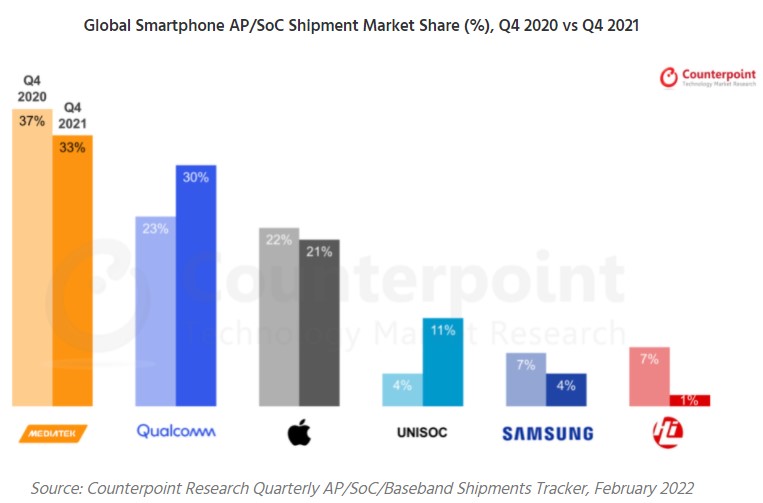
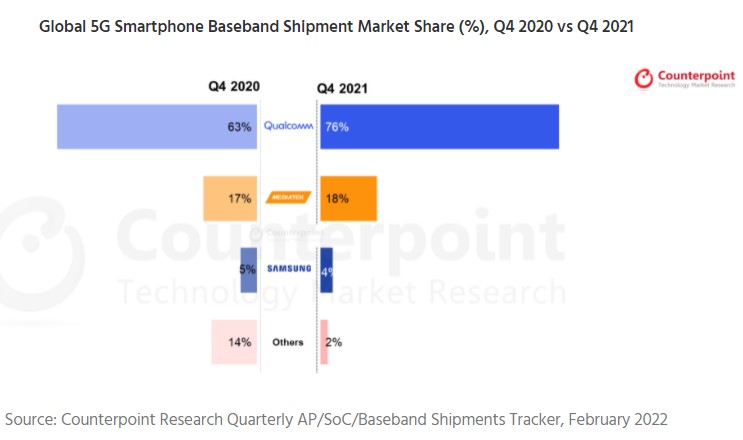
According to research firm Techcet, Ukraine supplies more than 90% of the U.S.’s semiconductor-grade neon, a gas integral to the lasers used in the chip-making process, while Russia supplies 35% of the U.S.’s palladium supply, a rare metal that can be used to create semiconductors. Meanwhile, Russia provides a third of the palladium metal used in sensors and memory products produced by U.S. companies. Russia is also a “crucial” source of C4F6 (hexafluorocyclobutene), which several U.S. suppliers buy and purify for advanced node logic device etching and advanced lithography processes for chip production. It is not clear whether these commodities could be disrupted by the conflict, although chipmakers are following the unfolding crisis carefully. (VentureBeat, Reuters, CNBC, Taipei Times)
According to Strategy Analytics, the global cellular baseband market grew 23.3% to USD8.15B in 3Q21, a new all-time record for the market. Qualcomm, MediaTek, Samsung LSI, Unisoc and Intel captured the top-5 cellular baseband revenue share spots in 3Q21. Qualcomm maintained its baseband market share leadership with a 55% revenue share, followed by MediaTek with 29% and Samsung LSI with 9%. (Strategy Analytics, Laoyaoba)
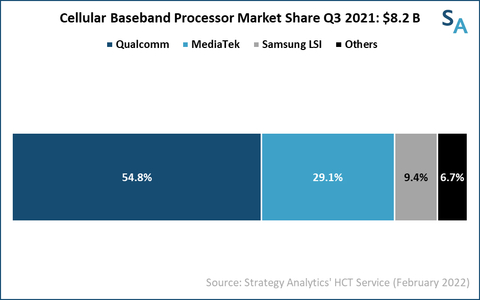
According to IC Insights, total MPU sales are expected to rise 7% in 2022 with cellphone processors increasing 10% following a 31% jump in 2021; modest growth is seen in computer CPUs and embedded MPUs. Total microprocessor sales in 2021 maintained strength, growing 14% to a record-high USD102.9B after climbing 16% in 2020, when emergency lockdowns in the Covid-19 virus crisis drove up demand for personal computers and large-screen smartphones because of increased reliance on the Internet during the deadly pandemic. (Laoyaoba, IC Insights)
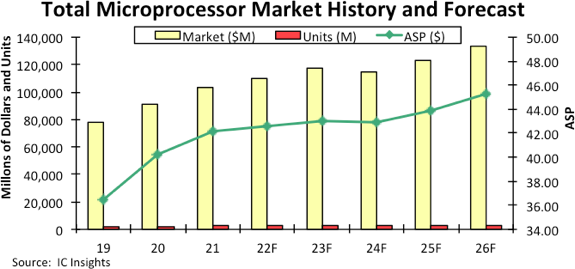
The conflict between Russia and Ukraine has escalated in recent days. In addition to the surge in natural gas and crude oil prices, the conflict may also impact the supply of non-ferrous metals including aluminum, nickel, and copper. According to TrendForce, nickel is a key upstream raw material for the manufacture of electric vehicle power batteries and mainly used in the production of ternary cathode materials. In 2021, global nickel mine production was approximately 2.7M tons, originating primarily from Indonesia, the Philippines, and Russia. Russian nickel production accounts for approximately 9% of the world’s total (including low, medium, and high-grade nickel), ranking third globally. At present, the market penetration rate of new energy vehicles is accelerating and ternary power batteries account for nearly half of power battery market share, which signals strengthening demand for upstream raw material nickel for automotive power batteries. Although Russian nickel exports remain unaffected for the time being, if the situation on the ground between Russia and Ukraine continues to deteriorate, global nickel supply may be impacted in the short term, pushing up nickel prices, and further increase cost pressures on end product markets such as the electric vehicle industry. (TrendForce, TrendForce)
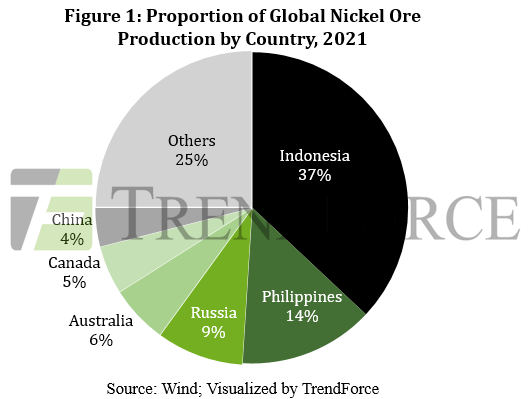

BOE has showcased the f-OLED flexible “N”-shaped foldable display technology. It supports both inward and outward folding on a single display. The BOE f-OLED flexible “N”-shaped folding display prototype comes with a flexible AMOLED display with an original size of 12.3”. It can turn into a super-portable form of 5.6”. When the flexible display is fully unfolded, it can be used as a wide entertainment and work platform. When the display screen is completely stowed (outside fold + inside fold), the body can be transformed into a portable device with a thickness of 2cm and a size of 5.6”.(CN Beta, Money DJ, IT Home, GizChina, OLED-Info, Weibo)

Visionox has announced China’s first 1Hz low-power AMOLED display, which can achieve a dynamic refresh rate of 1-120Hz through Hybrid-TFT technology. The Hybrid-TFT low-power technology is mass-produced by China’s first “fully flexible and high-definition” Vision (Hefei) G6 fully flexible AMOLED production line. Visionox has pointed out that it laid out the Hybrid-TFT low-power technology and its production capacity during the construction stage of the production line, and finally achieved the shortest Hybrid-TFT mass-production speed and the largest Hybrid-TFT production capacity in China.(CN Beta, IT Home, LED Inside)
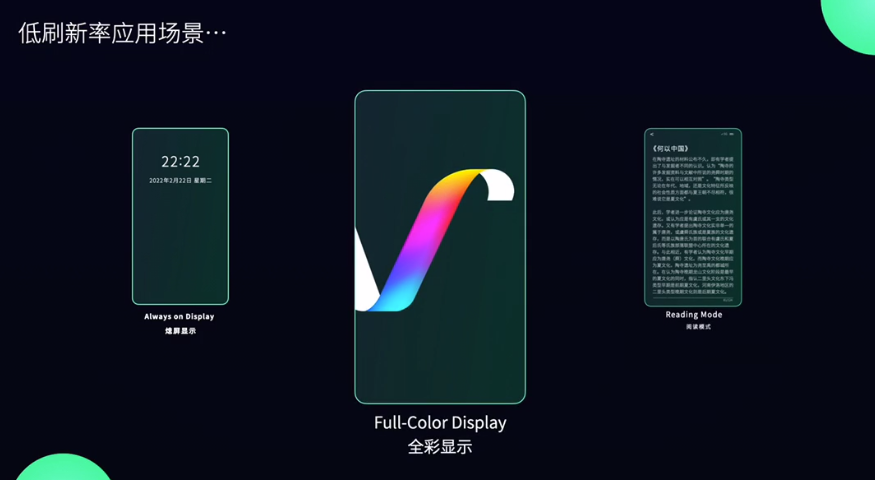
TCL Technology has revealed that the company’s t4 flexible AMOLED production line is fully operational in the first phase, and the second and third phases have completed production capacity construction. Through diversified technology reserves such as foldable, camera under display, and LTPO, it will accelerate product development and customer cooperation in the high-end market. TCL Technology’s small-size business has maintained good cooperation with global brand mobile phones. Its t3 products have been continuously upgraded in technologies such as blind holes, narrow bezels, under-screen fingerprints, and dynamic frame rates, and orders are in short supply; t4 has a deep layout of folding screens and under-screen cameras. and other differentiated high-end technologies, product competitiveness and customer structure continue to improve.(Laoyaoba, East Money, Sohu)

SK Hynix has announced it has developed PIM (Processing in Memory), a next-generation memory chip with computing capabilities. For the first product that adopts the PIM technology, SK Hynix has developed a sample of GDDR6-AiM (Accelerator in memory). The GDDR6-AiM adds computational functions to GDDR6* memory chips, which process data at 16Gbps. A combination of GDDR6-AiM with CPU or GPU instead of a typical DRAM makes certain computation speed 16 times faster. GDDR6-AiM is widely expected to be adopted for machine learning, high-performance computing, and big data computation and storage.(CN Beta, SK Hynix, Tom’s Hardware)
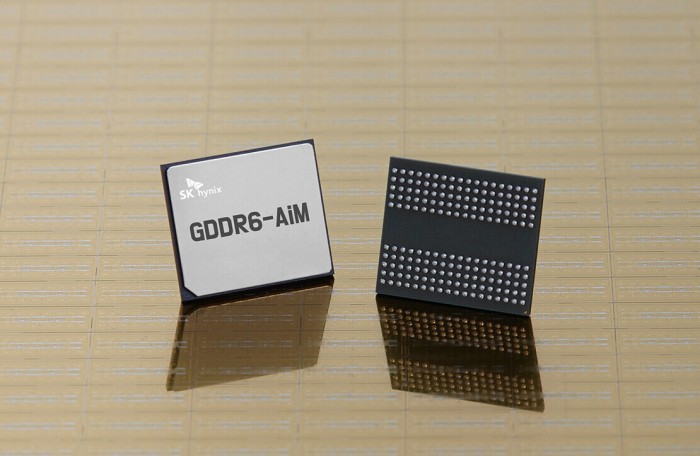

LG Electronics is exiting the global solar panel business. The decision follows a comprehensive review of the impact of increasing material and logistics costs, as well as severe supply constraints, on the solar business. Although panel production will wind down this spring, LG will continue to support its U.S. solar customers for years to come. LG stands behind its brand and will honor the limited warranty with each product sold. In addition, U.S. consumers, installers and contractors will benefit from LG’s increased focus in other energy-related business areas, according to Thomas Yoon, president and CEO, LG Electronics North America.(CN Beta, LG, PR Newswire, ZDNet)
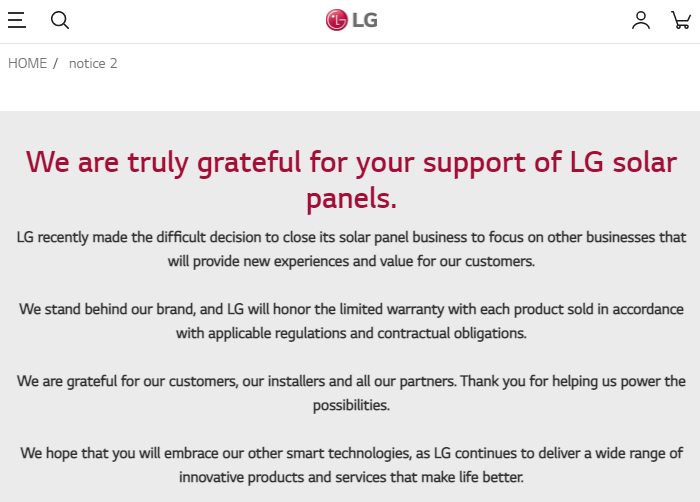
Contemporary Amperex Technology Ltd (CATL) chairman Robin Zeng has revealed that during the process of battery production, the technology, materials and equipment of the United States are not directly involved. Now the only thing that relies on the United States is the chip in the BMS, but this process is not high, 28nm process is sufficient, and the domestic technology is already available. Regarding the question of whether to build a factory in the United States that the outside world is concerned about, CATL has said: The company has more interactions with American customers, including both new forces and traditional car companies.(CN Beta, Yicai, 163)


Wind River, a leading developer of software that powers 5G mobile infrastructure, has announced a new partnership with Japanese telecom provider KDDI to deploy open 5G standards to its commercial customers. This new arrangement will see KDDI using Wind River Studio to power its 5G network, providing a virtualized base station that is compliant with the Open RAN (O-RAN) standard. In practical terms, this means KDDI will have more flexibility in delivering 5G to its commercial customers without the need to deal with the complexities of making different pieces of 5G equipment interoperate with each other. (Digital Trends, Wind River)


After publicly launching in the U.S. Sept 2021, Facebook Reels today is becoming globally available in more than 150 countries. The feature, which is a key part of Meta’s response to the TikTok threat, allows creators to share short-form video content on Facebook or cross-post Reels from Instagram in order to reach a broader audience. Alongside today’s global rollout, Facebook is also introducing more creative tools and new ways for creators to make money from their Reels through advertising, and soon, Stars. (CN Beta, The Verge, TechCrunch)

The global smartphone market revenue crossed USD448B in 2021, according to Counterpoint Research. Smartphone average selling price (ASP) grew 12% YoY to reach USD322, mainly due to a higher share of 5G smartphones, which have a significantly higher ASP than the 4G models, as well as Apple’s successful launch of its iPhone 13 devices. Besides, more 5G-enabled models were released in 2021 as OEMs such as Xiaomi, vivo, OPPO and realme focused on fulfilling a greater demand for affordable 5G smartphones in emerging markets such as India, SEA, LATAM and Eastern Europe. As a result, 5G-enabled smartphones contributed more than 40% of the global smartphone shipments in 2021, compared to 18% in 2020. (Android Headlines, GSM Arena, Counterpoint Research)
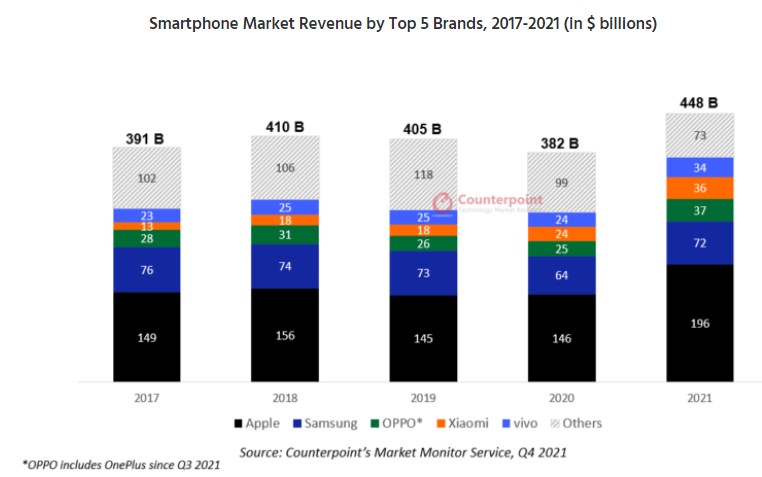
Many Samsung smartphones sold over the past few years shipped with an embarrassing security flaw that could let hackers extract sensitive information from the devices. Tel Aviv University in Israel has found that several Samsung Galaxy S8, Galaxy S9, Galaxy S10, Galaxy S20, and Galaxy S21 phones models do not store their cryptographic keys properly, effectively allowing hackers to extract the information stored in them, which could include sensitive data such as passwords. (GizChina, SamMobile, IACR)
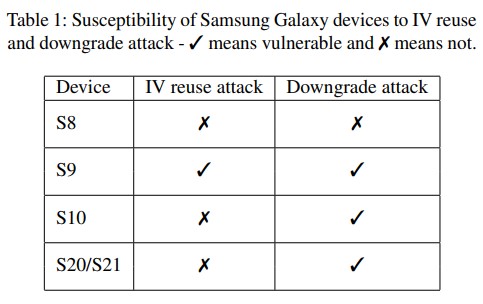
HMD Global seems is forced to pull most of its smartphones out of the German and Swiss markets, leaving only the two newly announced models – the Nokia G21 and G11. The company is being sued by VoiceAgeEVS LLC (VAEVS) over patents related to VoLTE and the Enhanced Voice Service standard that it is based on. VAEVS applied for a sales ban in Dec 2021 and for now courts are siding with it.(GizChina, GSM Arena, Computerbild)
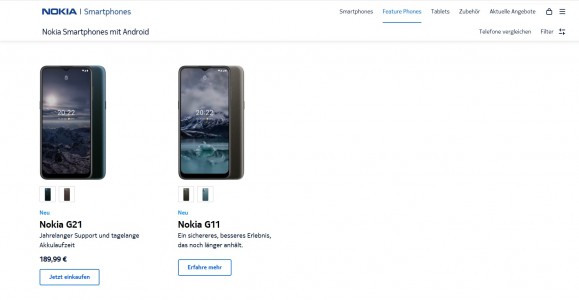
OPPO Find X5 series is announced in Europe:
- Find X5 – 6.55” 1080×2400 FHD+ HiD POLED 120Hz, Qualcomm Snapdragon 888 5G, rear tri 50MP 1.0µm OIS-13MP telephoto 2x optical zoom-50MP 1.0µm ultrawide + front 32MP, 8+256GB, Android 12.0, fingerprint on display, 4800mAh 30W, 10W reverse wireless charging, EUR999.
- Find X5 Pro – 6.7” 1440×3216 QHD+ HiD LTPO2 AMOLED 120Hz, Qualcomm Snapdragon 8 Gen 1, rear tri 50MP 1.0µm OIS-13MP telephoto 2x optical zoom-50MP 1.0µm ultrawide + front 32MP, 12+256GB, Android 12.0, fingerprint on display, 5000mAh 80W, 50W fast wireless charging, 10W reverse wireless charging, IP68, EUR1,299.
- Find X5 Lite – 6.43” 1080×2400 FHD+ HiD AMOLED 90Hz, MediaTek Dimensity 900 5G, rear tri 64MP-8MP ultrawide-2MP macro + front 32MP, 8+256GB, Android 11.0, fingerprint on display, 4500mAh 65W, reverse charging, EUR480.
(GSM Arena, GSM Arena, India Times, Pocket Now)

vivo iQOO 9 series is announced in India:
- iQOO 9 – 6.56” 1080×2376 FHD+ HiD AMOLED 120Hz, Qualcomm Snapdragon 888+ 5G, rear tri 48MP gimbal OIS-13MP telephoto 2x optical zoom-13MP ultrawide + front 16MP, 8+128 / 12+256GB, Android 12.0, stereo speakers, fingerprint on display, 4350mAh 120W, INR43,000 (USD575) / INR47,000 (USD630).
- iQOO 9 Pro – 6.78” 1440×3200 HiD LTPO2 AMOLED 120Hz, Qualcomm Snapdragon 8 Gen 1, rear tri 50MP 1.0µm gimbal OIS-16MP telephoto 2.5x optical zoom OIS-50MP ultrawide + front 16MP, 8+256 / 12+256GB, Android 12.0, stereo speakers, fingerprint on display, 4700mAh 120W, 50W fast wireless charging, 10W reverse wireless charging, INR64,990 (USD870) / INR69,990 (USD940).
- iQOO 9 SE – 6.62” 1080×2400 FHD+ HiD AMOLED 120Hz, rear tri 48MP o.8µm OIS-13MP ultrawide-2MP depth + front 16MP, 8+128 / 12+256GB, Android 12.0, stereo speakers, fingerprint on display, 4500mAh 66W, INR34,000 (USD455) / INR38,000 (USD509).
(GizChina, GSM Arena, The Verge)
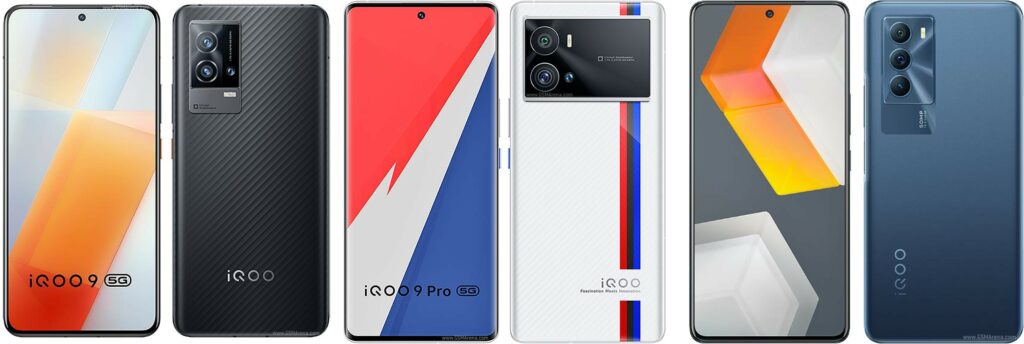
ZTE nubia Z40 Pro is announced in China – 6.67” 1080×2400 FHD+ HiD AMOLED 144Hz, Qualcomm Snapdragon 8 Gen 1, rear tri 64MP OIS-8MP periscope telephoto 5x optical zoom OIS-50MP ultrawide + front 16MP, 8+128 / 12+256GB, Android 12.0, fingerprint on display, 5000mAh 80W / 4600mAh 66W, 15W fast magnetic wireless charging, CNY3,399 (USD538) / CNY4,299 (USD681). (Android Headlines, GSM Arena)
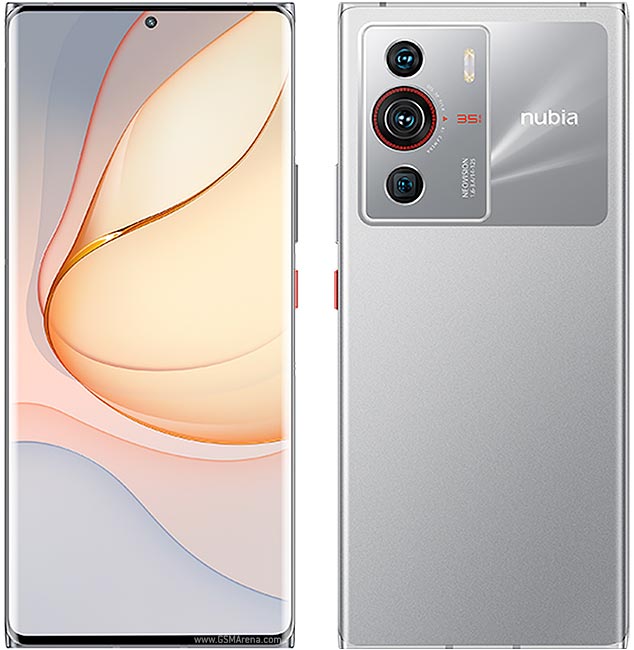
Motorola Edge Plus 2022 (for US) / Motorola Edge 30 Pro is now official – 6.7”1080×22400 FHD+ HiD OLED 144Hz, Qualcomm Snapdragon 8 Gen 1, rear tri 50MP 1.0µm OIS-50MP ultrawide-2MP depth + front 60MP, 8+128 / 8+256 / 12+512GB, Android 12.0, side fingerprint, 4800mAh 30W/60W, 15W fast wireless charging, 5W reverse wireless charging, starts from USD900. (Android Authority, XDA-Developers, GSM Arena)
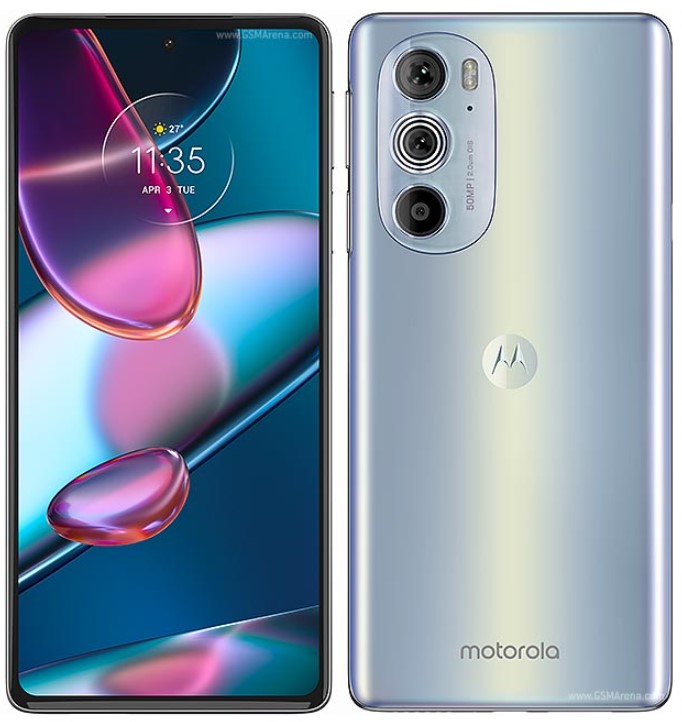
ZTE nubia Red Magic 7 and 7 Pro are unveiled, featuring Qualcomm Snapdragon 8 Gen 1:
- Red Magic 7 –6.8” 1080×2400 FHD+ AMOLED 165Hz with pressure sensitive zones (500Hz touch-sensing), rear tri 64MP 0.7µm-8MP ultrawide-2MP macro + front 8MP, 8+128 / 12+128 / 12+256GB, Android 12.0, built-in cooling fan, stereo speakers, fingerprint on display, 4500mAh 120W (China) / 65W, from CNY3,999.
- Red Magic 7 Pro –6.8” 1080×2400 FHD+ CuD AMOLED 165Hz with pressure sensitive zones (500Hz touch-sensing), rear tri 64MP 0.7µm-8MP ultrawide-2MP macro + front 16MP camera under display, 12+128 / 12+256 / 16+256GB, Android 12.0, built-in cooling fan, stereo speakers, fingerprint on display, 5000mAh 135W, from CNY4,799.
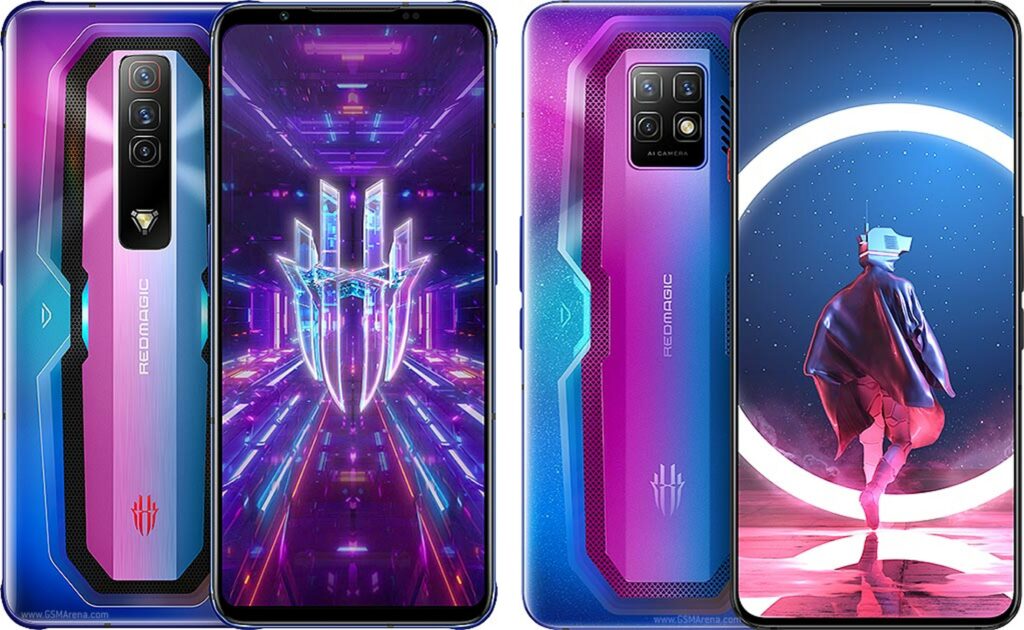
BLU G91 Max is launched in US – 6.8” 1080×2460 FHD+ HiD IPS LCD, MediaTek Helio G95, rear quad 108MP-5MP ultrawide-2MP macro-2MP depth + front 16MP, 8+128GB, Android 11.0, side fingerprint, 5000mAh 18W, 10W fast wireless charging, USD250.(Phone Arena, GSM Arena, BLU)
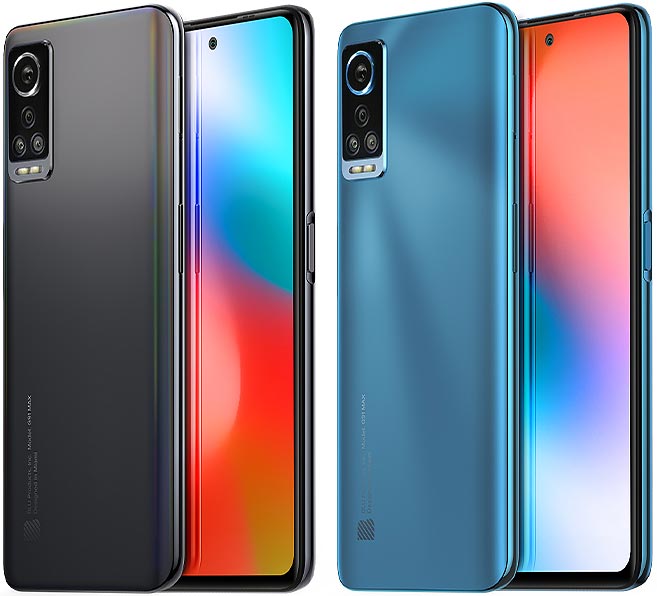

OPPO Pad is announced – 11.0” 1600×2560 IPS LCD 120Hz, Qualcomm Snapdragon 870 5G, rear 13MP + front 8MP, 6+128 / 8+256GB, Android 11.0, stereo speakers, 8460mAh 33W, reverse charging, CNY2,299 (USD363) / CNY2,999 (USD474).(Android Headlines, Weibo, GSM Arena)
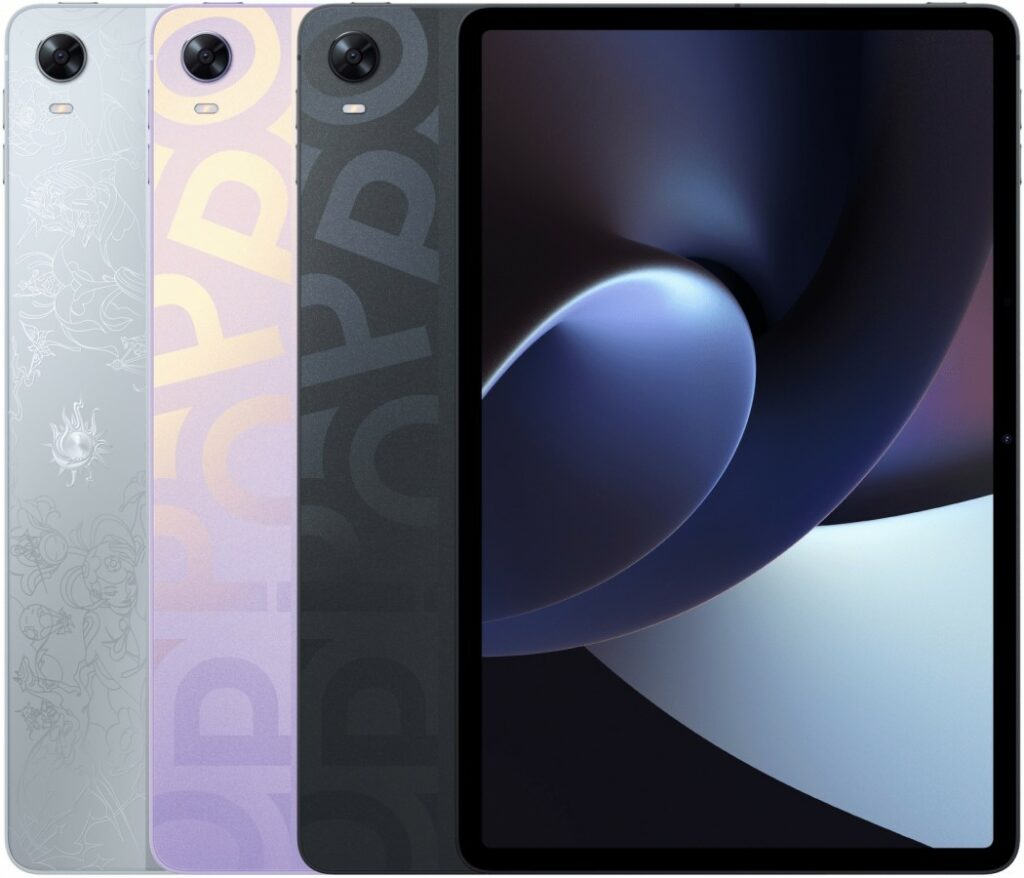

Apple VR devices are reportedly equipped with micro organic light emitting diode (OLED) displays. Apple has cooperated with TSMC with developing OLED displays for VR devices. Micro OLED displays do not require color filters since OLEDs are deposited directly on the chip wafer. Micro OLED is smaller, thinner, and more efficient. The VR headset application processor (AP) will be applied with M1 Chip, which is Apple’s self-developed system-on-chip, and the operating system (OS) will be running iOS. (GizChina, ET News, Apple Insider)
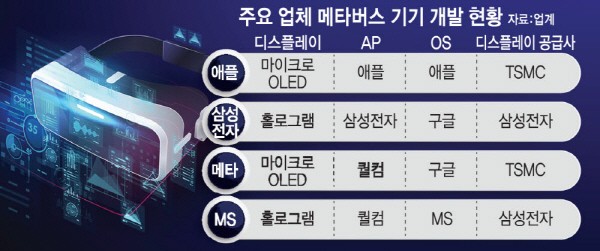

Faction Technology and Arcimoto have showcased a next-generation driverless delivery vehicle based on the Arcimoto Platform at the new Arcimoto RAMP manufacturing facility in Eugene, Oregon today. Equipped with Faction’s DriveLink and TeleAssist technologies, the completely driverless Faction D1 combines autonomy with remote human teleoperation. The driverless vehicle system retains the Arcimoto FUV’s capabilities of a 75mph top speed and just over 100 miles of range while transporting up to 500 pounds of cargo. (CN Beta, Business Wire, Elektrek)

In 2021, total sales of new energy vehicles (NEVs including battery electric vehicles, plug-in hybrid electric vehicles, and fuel cell vehicles) reached 6.473M units, with annual growth rate reaching 122%, the highest growth rate since the development of vehicle electrification, according to TrendForce’s research. Battery electric vehicles (BEV) accounted for approximately 71.6% of total sales and plug-in hybrid electric vehicles (PHEV) accounted for approximately 28.1%, while the scale of fuel cell vehicles remained small. (TrendForce, TrendForce)
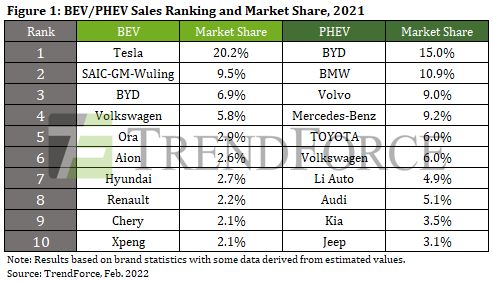
Rivian CEO RJ Scaringe has said the EV startup is making progress in the increase of production of electric vehicles at its plant in Normal, Illinois. The company is aiming to take 10% share in the EV market. In Jan 2022, the company was building around 200 vehicles per week, which is nowhere near enough to satisfy the existing demand in a reasonable amount of time. (CN Beta, TechStory, Inside EVs)
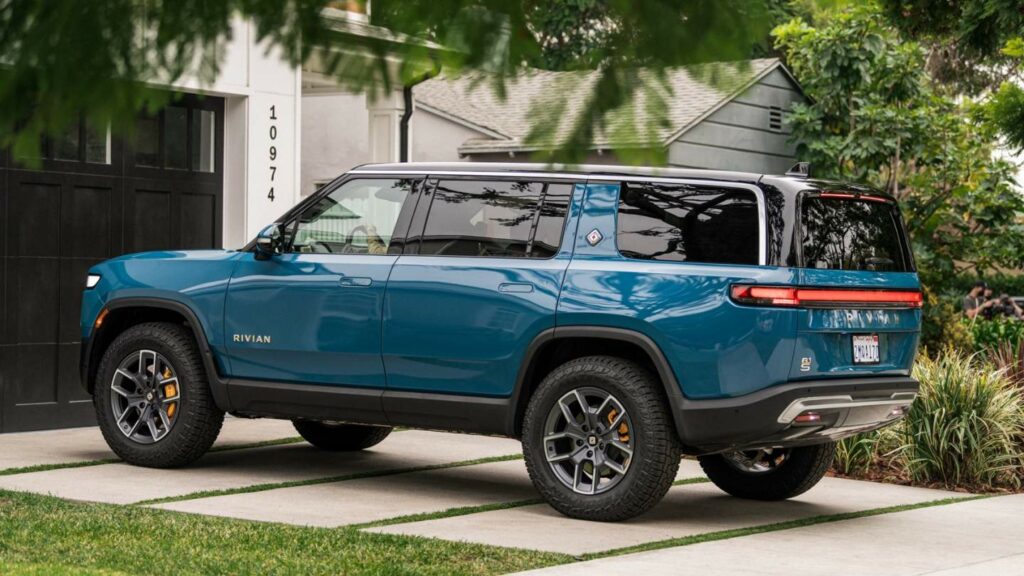
Motional and Via are teaming up to launch a free robotaxi shuttle service in Las Vegas. Motional is a joint venture between Hyundai and Aptiv that has been testing its vehicles in Las Vegas and California. Via is a transit software company that formerly operated on-demand vehicles in New York City and Washington, DC. As of today, Motional’s robotaxis are available on Via’s smartphone app for passengers in downtown Las Vegas.(CN Beta, TechCrunch, Reuters, The Verge, PR Newswire)
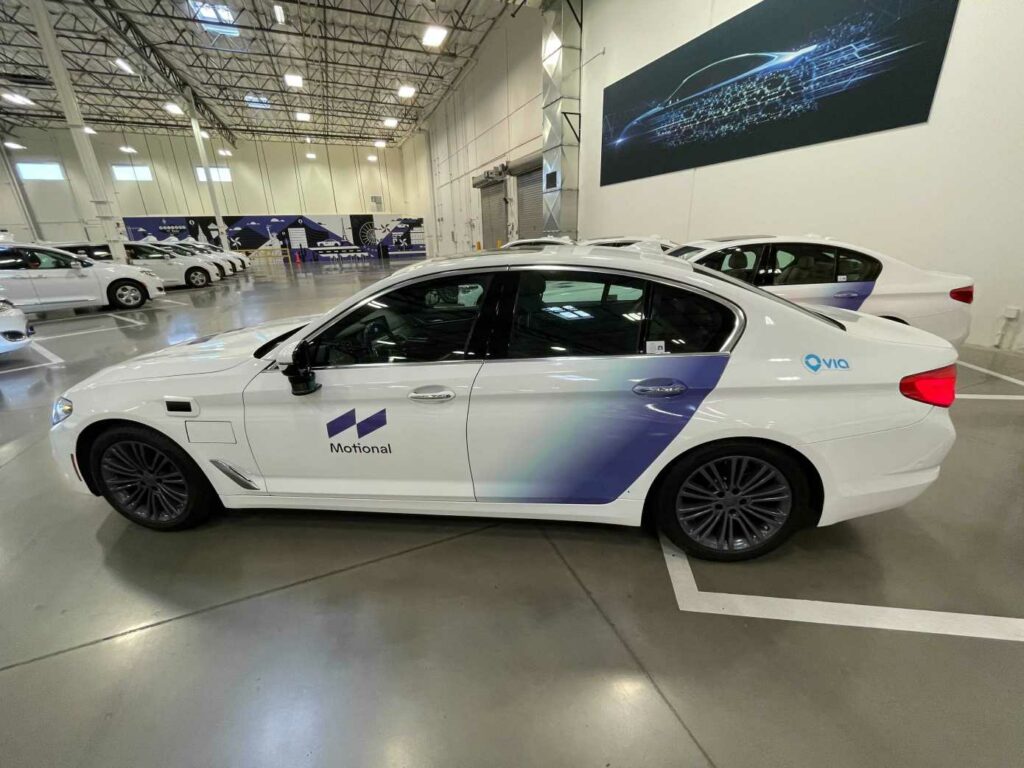

OpenSea and NFT communications platform Metalink have announced a new partnership aimed at preventing social engineering attacks carried out through Discord DMs. Some confidence tricksters have made millions of dollars by posing as customer service agents in OpenSea’s official Discord server and tricking NFT holders into sharing details that will let the scammers take control of their cryptocurrency wallets. OpenSea hopes to mitigate these scams by using Metalink, which operates a “token gated” communications platform so that only users holding certain NFTs in their cryptocurrency wallets will be able to get access. When they do so, they will be connected with authenticated OpenSea support representatives, theoretically cutting out potential scammers from the loop. (CN Beta, Decrypt.io, Cointelegraph, The Verge)

OpenSea, one of the most popular and well-known NFT trading platforms, suffered a hacker attack, possibly a phishing campaign, which compromised 32 accounts and caused the theft of 254 tokens in total. There were several collections and works that currently have a very high value, including the Bored Ape Yacht Club and the Azuki; according to estimates, the total value of the steal amounts to 641 ETH, which at the moment is equivalent to approximately USD1.7M.(GizChina, Engadget, The Verge)
